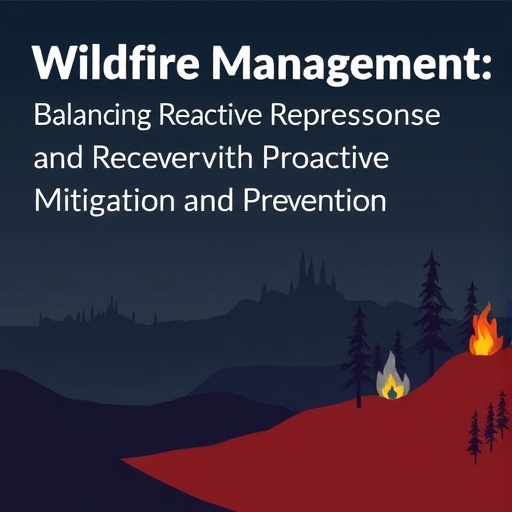Catastrophic wildfires have emerged as one of the most formidable environmental and economic challenges of our era, reshaping landscapes, displacing communities, and imposing staggering financial burdens on governments worldwide. Their frequency and intensity have surged dramatically, a trend exacerbated by changing climate conditions, prolonged droughts, and expanding human settlements into fire-prone regions. British Columbia (BC), Canada, exemplifies this crisis vividly, presenting a microcosm of the dilemmas confronting policymakers globally as they grapple with escalating wildfire threats and the daunting costs of suppression and recovery.
Over the past decade alone, BC has witnessed the devastation of more than seven million hectares of forestland due to wildfires, an expanse surpassing the size of some small countries. The financial toll of these blazes is equally staggering, with suppression efforts and subsequent recovery expenditures exceeding $4.8 billion. Yet, these figures only hint at the broader societal impact—indirect costs, including public health ramifications from smoke inhalation, economic disruptions from business and infrastructure damage, and the erosion of environmental services, escalate this crisis to a level demanding urgent strategic reconsideration.
The government of BC now stands at a policy crossroads that encapsulates a global question: should resources continue to be funneled predominantly towards reactive firefighting efforts and post-fire rehabilitation, or should there be a paradigm shift toward proactive wildfire mitigation and prevention strategies? This debate underscores the essential tension between immediate crisis response needs and the long-term investments required to foster resilience in forest ecosystems and communities.
Reactive wildfire management, characterized by extensive suppression campaigns and emergency responses, has historically dominated governmental agendas. While necessary for safeguarding lives and property during active fires, these reactive measures are financially unsustainable and do not address the root causes that amplify wildfire severity. Scientific studies unequivocally show that prevention strategies, such as fuel management and controlled burns, are more cost-effective over time, reducing fire sizes, intensities, and subsequent emergency expenditures.
To transcend this reactive model, a transformation in wildfire policy necessitates setting clear resilience goals grounded in rigorous economic and risk analysis. These goals would quantify acceptable levels of wildfire risk, economic losses, and ecological impacts, guiding investment priorities and intervention strategies. Establishing measurable targets allows for accountability, enhances strategic planning, and fosters transparency in wildfire governance.
Public understanding and community support are pivotal in this shift towards preventive wildfire management. Prescribed burns and other fuel reduction techniques often face public resistance due to concerns about air quality, perceived risks, and immediate inconveniences. Overcoming these challenges requires comprehensive education campaigns, transparent communication about short-term trade-offs versus long-term safety benefits, and inclusive stakeholder engagement to build consensus around necessary sacrifices for greater resilience.
Collaborative, hands-on interventions at the landscape scale further bolster mitigation efforts. Integrating scientific expertise with Indigenous knowledge, industry experience, and community insights ensures that wildfire strategies are ecologically sound, culturally sensitive, and socially equitable. Indigenous fire stewardship, long practiced through controlled burns to manage ecosystems sustainably, offers valuable lessons for achieving resilient landscapes adapted to historical fire regimes.
However, these large-scale interventions demand consistent political commitment and sustained funding over multiple decades—a complex endeavor given shifting political priorities and budgetary constraints. Securing long-term support requires effectively leveraging public concern over wildfire impacts and tying policies to scientific evidence to build enduring policy frameworks insulated from short-term political cycles.
The economic rationale for investing in wildfire mitigation is compelling. Analysis reveals that every dollar spent on preventive measures yields multiple dollars saved in suppression costs, infrastructure repair, and health care expenses linked to wildfire smoke. Moreover, proactive management enhances ecosystem services such as carbon sequestration, biodiversity conservation, and watershed protection, further underscoring the multifaceted benefits of shifting resource allocation towards prevention.
Despite this evidence, inertia persists in wildfire management paradigms. Institutional structures, entrenched firefighting cultures, and the political appeal of immediate crisis responses often overshadow the less tangible, long-term gains of mitigation strategies. This inertia calls for transformative policy leadership capable of navigating complex stakeholder landscapes, fostering interdisciplinary collaboration, and championing innovative financing mechanisms tailored to wildfire resilience.
In addressing the wildfire dilemma, British Columbia’s experience serves as a bellwether for similar jurisdictions worldwide facing analogous challenges. Their choices will set precedents in balancing emergency responsiveness with prudent, science-based prevention. This evolving policy discourse highlights the imperative to integrate climate adaptation strategies into wildfire governance, ensuring preparedness against an unpredictable, hotter, and drier future.
Ultimately, the path forward requires reconceptualizing wildfires not merely as disasters to be fought but as integral components of dynamic ecosystems necessitating thoughtful management. By prioritizing long-term resilience through collaborative, informed, and adequately funded approaches, governments can shift away from costly reactive cycles towards sustainable wildfire coexistence—protecting people, property, and the environment in a changing world.
Subject of Research: Wildfire management strategies and policy decision-making under climate change conditions.
Article Title: Wildfire management at a crossroads: Mitigation and prevention or response and recovery?
News Publication Date: 2-Oct-2025
Web References: http://dx.doi.org/10.1126/science.adx1230
Keywords: Wildfire management, wildfire mitigation, wildfire prevention, fire suppression, climate change adaptation, prescribed burns, landscape-scale interventions, fire resilience, British Columbia wildfires




